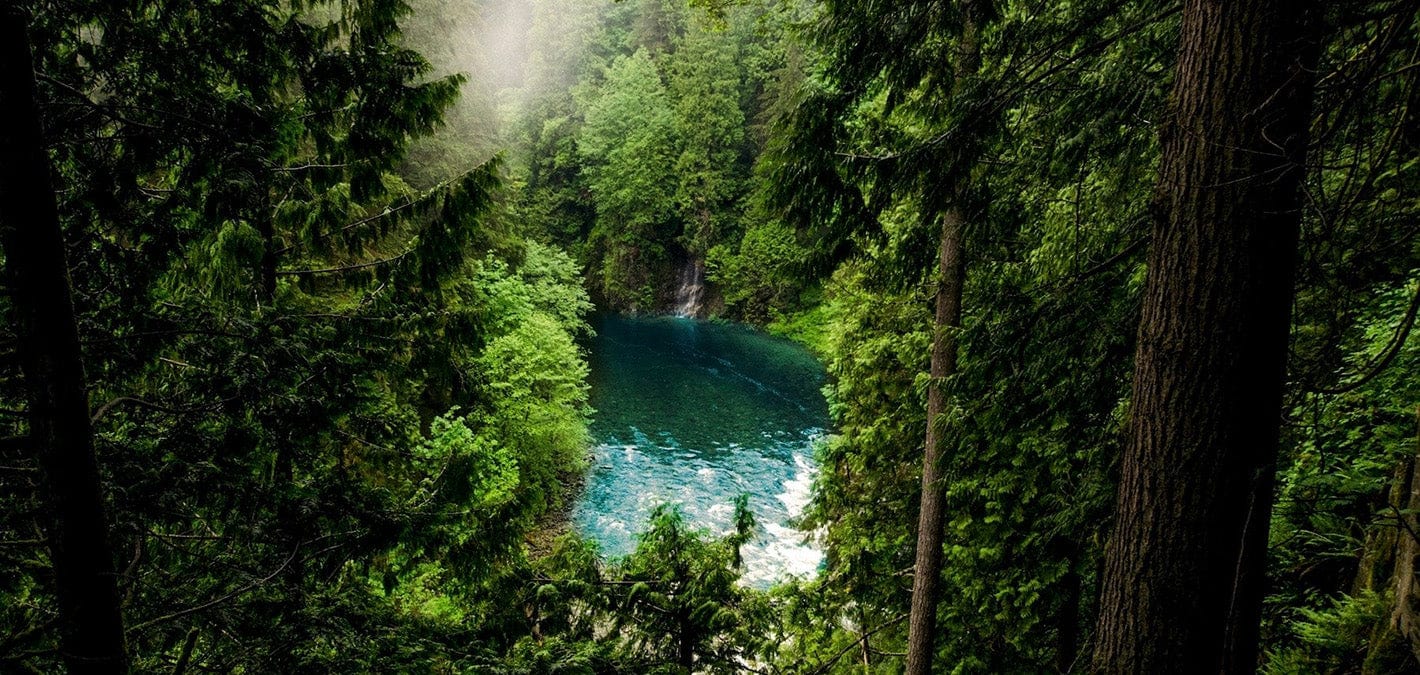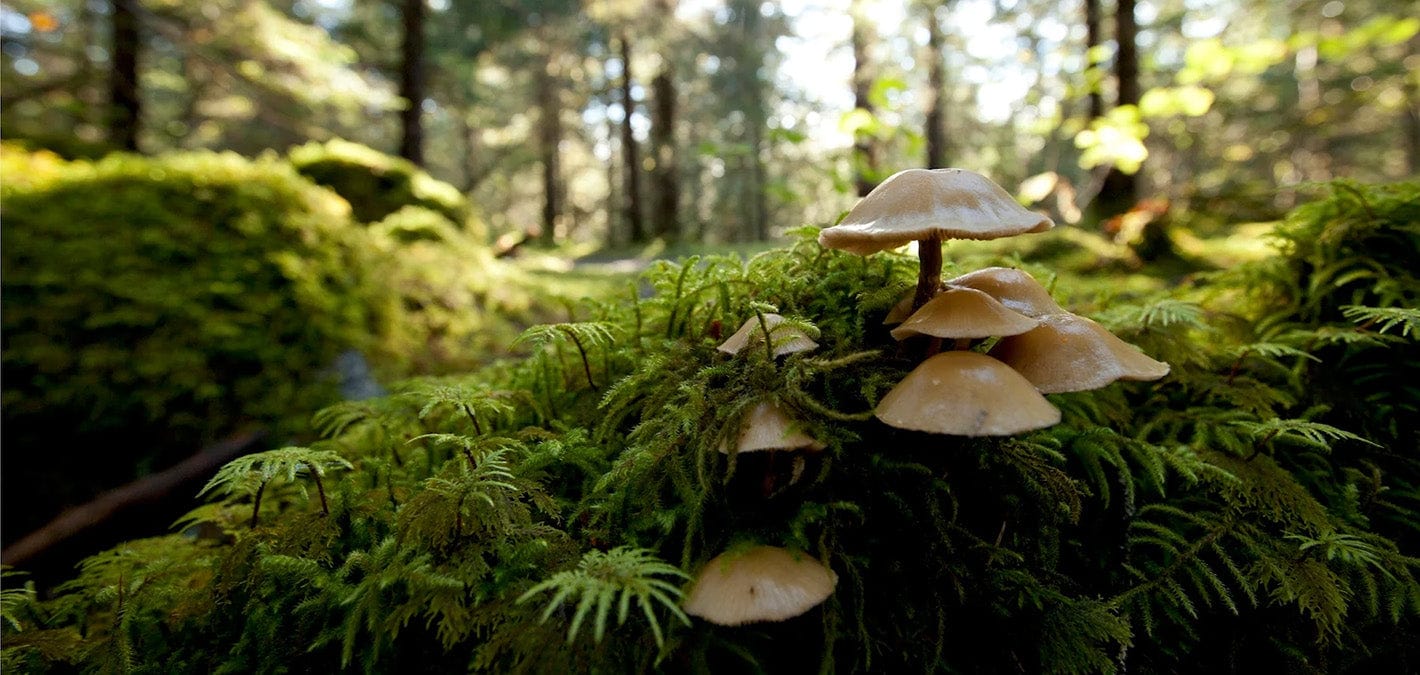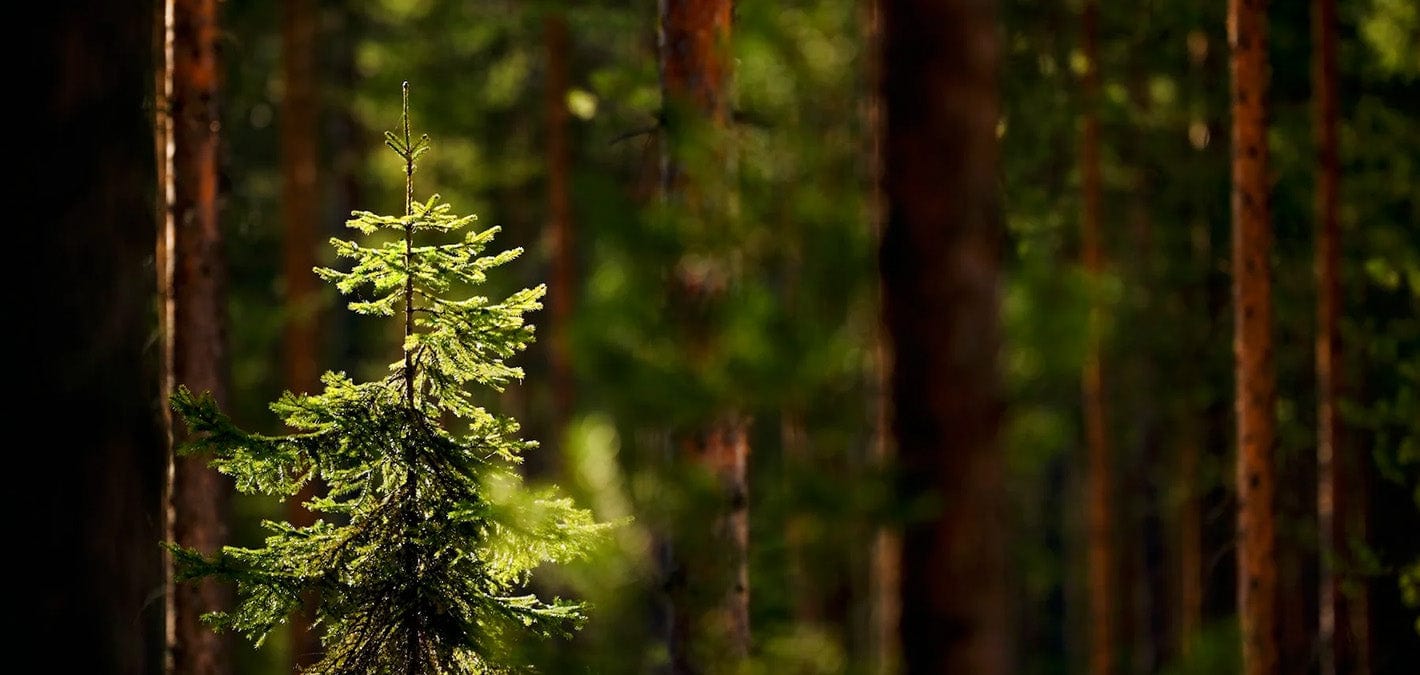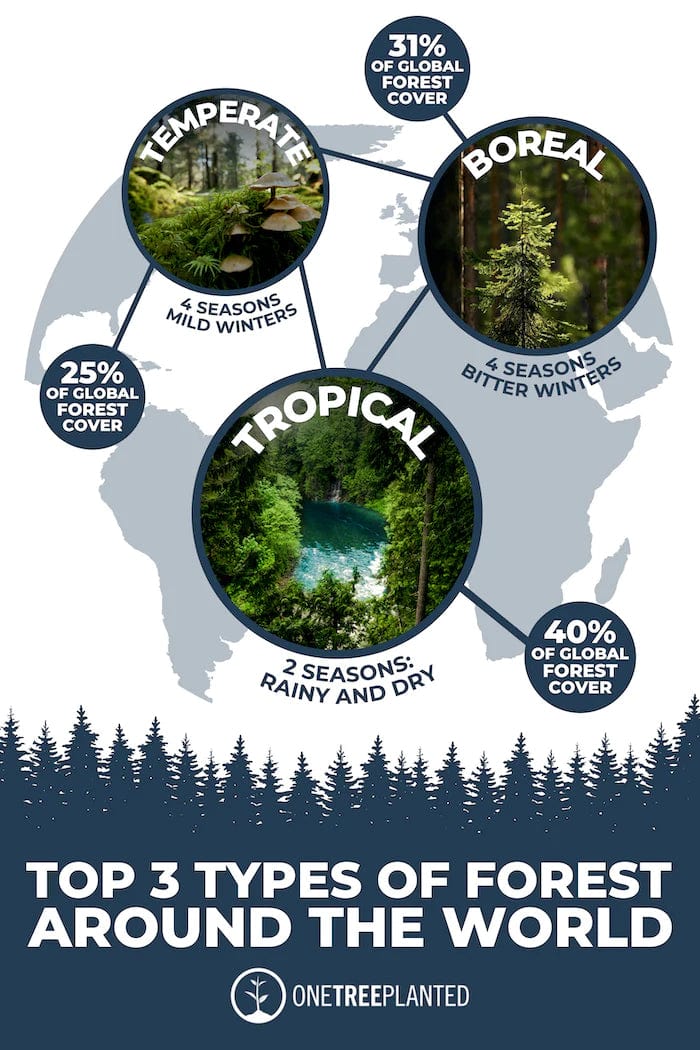
Get news, updates, & event Info delivered right to your inbox:
FORESTS ARE AS UNIQUE AS THE SPECIES THEY SHELTER
Trees have been evolving for hundreds of millions of years, changing the face of the earth as different types of forests expanded their footprint and adapted to changing climatic conditions. Today, the vast variety of different types of trees cover about one third of the total land area (or, over 15.3 million square miles), contain around 70% of global organic carbon (carbon found in a living organism), and are home to 80% of the world’s terrestrial biodiversity.
Most experts agree that, broadly speaking, there are three types of forests: tropical rainforests, temperate, and boreal. Within these types are several subcategories that are based on seasonal rainfall, unique species composition, and more. Confused already? Don't be! Join us as we do a deep dive on the three types of forest, what makes each one unique, and why each forest type is uniquely important to our planet.
THE DIFFERENT TYPES OF FORESTS

1. TYPES OF RAINFORESTS
The types of rainforest include:
- Tropical mangrove forests
- Temperate rainforests
- Seasonal rainforests
- Semi-evergreen forests
- Moist/dry deciduous forests
The largest tropical forest on the planet is, by far, the Amazon rainforest — with the Congo Basin Forest taking second place.
TROPICAL RAINFOREST CLIMATE AND ECOLOGY
Found near the equator, Southeast Asia, Sub-Saharan Africa, and Central America, tropical rainforests are characterized by their warm temperatures (ranging from 68-88° F), lush plant life, incredible biodiversity, and absence of winter — with only a rainy and dry season.
As you might imagine, these conditions are highly conducive to biodiversity: tropical forests house around 50% of the world’s plants and animals — including orchids, bromeliads, vines, ferns, mosses, and numerous birds, bats, mammals, and insects.
Thanks to persistent rainfall that often exceeds 200 cm annually, tropical rainforest soils experience rapid decomposition and leaching — and as a result are generally acidic and nutrient-poor.
Despite the poor soil, the composition of rainforest trees is highly diverse, with up to 100 different species in just 1 square kilometer, creating a lush canopy overhead that allows little light to reach the forest floor. Most put down shallow roots as they stretch 25-35m into the sky, stabilizing themselves with buttressed trunks that tightly grip the ground. Fun fact: many rainforest tree species are evergreens — and not necessarily the towering the conifers we usually associate with that term.
WHAT'S HAPPENING TO TROPICAL FORESTS TODAY?
More than 1/2 of the world’s tropical forests have been destroyed, with more getting cut down every day for agricultural expansion, logging for lumber and fuel, and infrastructure development. To help address this, One Tree Planted is working with local communities to restore tropical forests such as the Amazon, around the world!

2. TYPES OF TEMPERATE FORESTS
Temperate forests include:
- Moist conifer and evergreen broad-leaved forests
- Dry conifer forests
- Mediterranean forests
- Temperate coniferous forests
- Temperate broad-leaved rainforests
The largest temperate rainforest in the world is Alaska’s Tongrass forest, which spans 16.7 million acres and is home to many rare and endemic species.
TEMPERATE FORESTS CLIMATE AND ECOLOGY
Spanning from the coast of eastern North America to northeastern Asia and western and central Europe, temperate forests are characterized by having four distinct seasons, moderate climates, and fertile soils that support a range of temperate forests wildlife species such as squirrels, rabbits, birds, deer, mountain lions, bobcats, timber wolves, foxes, and black bears.
Because they experience winter for 6+ months of the year, temperate forests' growing seasons are generally limited to 140-200 days. Many wildlife species either hibernate or migrate during the colder months.
With moderately dense canopies that still allow light through, the rich soil of temperate deciduous forest ecosystems support diverse understory vegetation. Unlike tropical forests, however, temperate forests usually have 3-4 tree species per square kilometer and are distinguished by deciduous trees that drop their leaves annually.
Common temperate forest tree species include oak, hickory, beech, hemlock, maple, basswood, cottonwood, elm, willow, and many spring-flowering herbs such as violet, partridgeberry, and goldthread.
WHAT'S HAPPENING TO TEMPERATE FORESTS TODAY?
Although they once spanned the globe, temperate forests have been extensively cleared for human settlement due to their moderate climate and rich soils. Today, only scattered patches remain to remind us of their historic grandeur. We plant trees in temperate forests across North America.

3. BOREAL FOREST
Boreal forests comprise the world’s largest terrestrial biome and form a broad belt across Eurasia and North America. Two thirds are located in Siberia, while the rest can be found in Scandinavia, Alaska, and Canada.
The boreal forest climate is characterized by short summers and long winters with incredibly cold temperatures (reaching -65°F in some places).
Boreal forests have poor, acidic soils and short growing seasons (only 130 days).
BOREAL FOREST CLIMATE AND ECOLOGY
Due to the extreme cold, boreal forest trees are limited to species that can tolerate it, with the most common boreal tree species being deciduous trees and evergreen conifers such as pine, fir, and spruce. With dense canopies, little light is able to reach the forest floor, which limits understory growth.
Despite these harsh conditions, an incredible diversity of life has adapted to and thrives in the unique boreal ecosystem.
Boreal wildlife species include caribou, woodpeckers, hawks, moose, bear, lynx, foxes, wolves, deer, hares, shrews, and bats — many of which must hibernate or migrate during the coldest months to survive.
WHAT'S HAPPENING TO BOREAL FORESTS TODAY
Despite their incredible breadth, boreal forests are under threat from extensive deforestation. But from Quebec to Ontario, we’re working to restore Canada’s iconic boreal forests!

As powerful and biodiverse as our world’s forests are, they are profoundly threatened by deforestation and degradation. We are working around the world to restore and recover these vital ecosystems for generations to come. Want to join us? Plant trees today!
Get news, updates, & event Info delivered right to your inbox:
Related Posts
How Trees Improve Water Quality and Watershed Health
11/03/2025 by Meaghan Weeden
How Do Trees Communicate?
06/03/2025 by Meaghan Weeden
9 Eco-Friendly Spring Cleaning Ideas
04/03/2025 by Meaghan Weeden
Popular On One Tree Planted
8 Amazing Bamboo Facts
14/01/2025 by Meaghan Weeden
Inspirational Quotes About Trees
09/01/2025 by Meaghan Weeden
How to Reduce Waste: 21 Ideas for Zero Waste Living
07/01/2025 by Meaghan Weeden
Fundraising Disclosures

Be Part of the
Restoration Movement
The Grove is more than just a monthly giving program: it's a vibrant community of individuals who are dedicated to reforestation and environmental restoration on a global scale.
As a member of The Grove, you affirm your commitment to restoring forests, nurturing biodiversity, and fostering positive global change.





